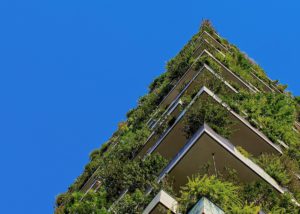Green building has hit the mainstream, and it has radically transformed the property market. With the sustainability of the environment at the epicenter, various construction-techniques and eco-friendly materials have been implemented to reduce the impact of construction and buildings on the environment.
Last week, we took a look at key construction techniques, this week we take a look at essential materials needed to go green. If you’re looking to step on to the green scene, here are a few key materials that are crucial for your green building project:
- Recycled Glass: Recycled materials prove to be pivotal in green building and construction. Recycled glass tops the list as one of the most functional materials used in green building. It has long-term environmental sustainability, and it prevents pollution caused by manufacturing products from virgin materials. Using recyclable glass in your building, will save energy and it also decreases the outlet of emission gasses. Recycled glass is a multi-purpose product, and it can be used for insulation, in countertops, flooring, and as tile landscaping between stones and bricks.
- Hardwood: The type of wood you choose matters, and within the green community, hardwood has been enjoying resurgence. Hardwood is a biodegradable option, and it is formaldehyde-free. Bamboo and cork are two popular hardwoods used in construction and building. Bamboo is a lightweight, yet strong material, with flexible durability, that can be used for flooring and carpentry. Cork is a fast-growing resource that is flexible and resilient. This lightweight material does not absorb water, and it is rot-resistant.
- Biodegradable paint: Green projects show a particular concern with the type of paint that is used. Popular paints often have a negative impact on the environment, and occupants of the building, that goes beyond unpleasant odors and volatile organic compounds (VOC). In attempt to reduce these negative effects, paints are being created from recycled, natural and bio-based content, to ensure that it promotes environmental sustainability and minimalizes the health risk for occupants. The key is to choose an eco-friendly paint with anti-microbial properties that shows resistance to scrubbing, brushing, and staining. So, you can do your bit for the environment while maintaining the color and quality of your paint!
- Hempcrete: Green construction building gives precedence to hempcrete as an eco-conscious substitute for concrete. Hempcrete is a strong material that is created from the inner wood fibres of the Hemp plant. This lightweight material is a renewable source that is biodegradable. Using Hempcrete not only benefits the environment, but it also simplifies the labour process as it is easier to work with than traditional lime and concrete mixtures. It also serves as a steady insulator and moisture regulator.
- Eco-Building Cement: In the raw state, traditional cements are environmentally friendly. However, it becomes hazardous for the environment during the industrial extraction and the mixing of cement. This negative footprint can be minimalized by replacing traditional cement, with an eco-friendly building cement. Environmentally friendly cements have a low carbon footprint and it contains reactive mineral components that maintains strength and promotes sustainability and durability. It is also beneficial as it reduces the heat of hydration in mass concrete.
Each of the above materials are focal aspects that should be implemented in your green building project! However, it must be noted that the effect and condition of each material will differ in various climates. Thorough research will allow you to choose the perfect materials for your climate and environment! So, do your research, purchase your green materials, and be on the forefront of the green scene!



No Comments